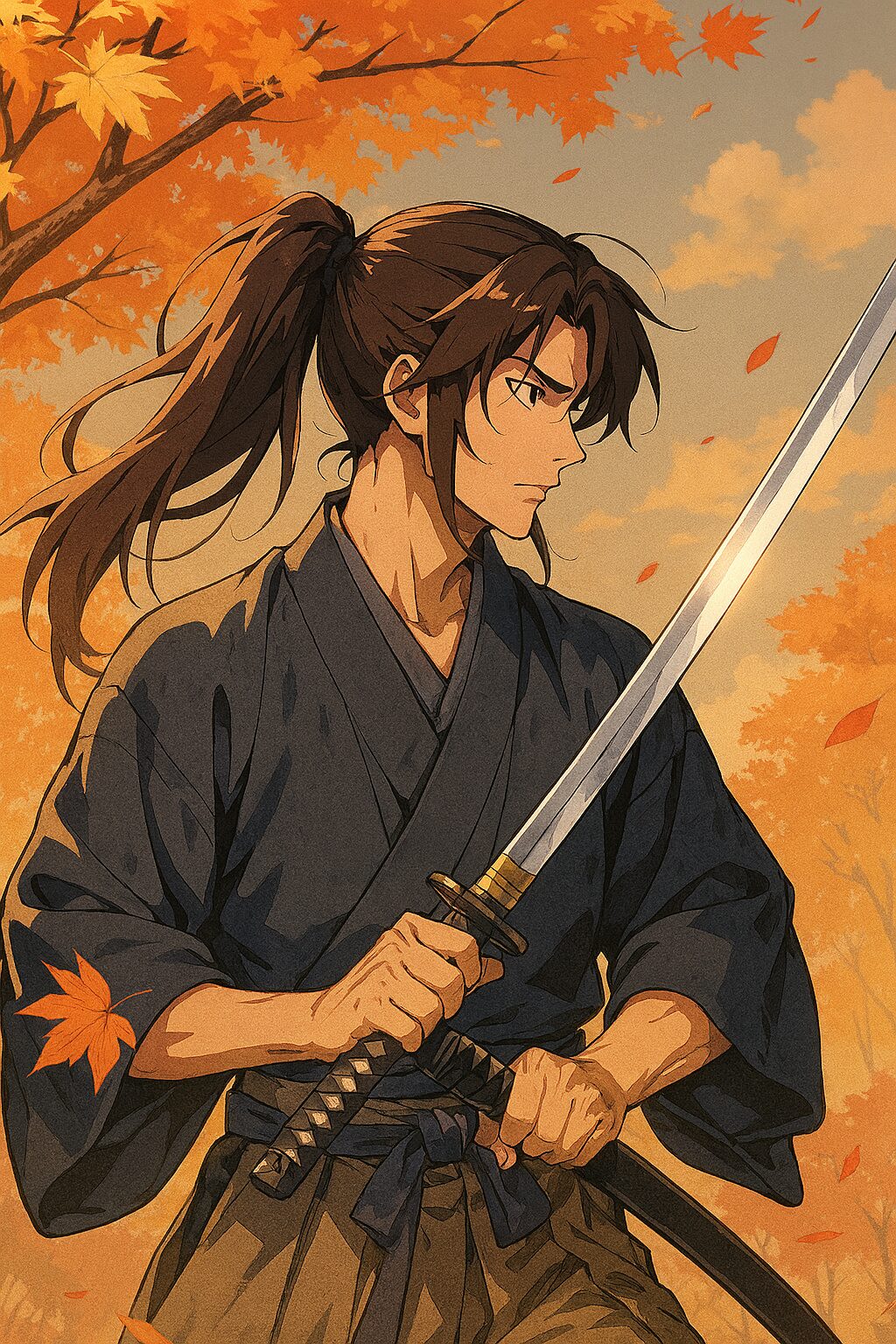- Introduction: The Japanese Sword Is Not Just a Weapon — It’s Culture
- What Is Japanese Sword Day?
- A Thousand-Year History of the Blade
- Structure and Types: Philosophy Within a Single Blade
- The Swordsmith’s Craft: Fire, Steel, and Prayer
- Spirituality of the Sword: Bushido and Aesthetic Philosophy
- Modern Appeal: From Museum Pieces to Pop Culture Icons
- Where to See and Experience Japanese Swords
- Conclusion: The Quiet Power Behind the Blade
- はじめに:日本刀は武器ではなく、文化である
- 日本刀の日とは?
- 日本刀の歴史:千年を超える刃の物語
- 刀の構造と種類:一本の刀に宿る哲学
- 刀匠の仕事:炎と鉄と祈りの芸術
- 日本刀の精神性:武士道と美意識の融合
- 現代の日本刀:美術品としての再評価
- 日本刀を見学・体験できる場所
- おわりに:刃の向こうに見える日本の心
Introduction: The Japanese Sword Is Not Just a Weapon — It’s Culture
Every year on October 4, Japan celebrates “Japanese Sword Day.” This commemorative day shines a light on the beauty, craftsmanship, and cultural significance of the Japanese sword. While many overseas associate it with samurai or ninja, the true essence of the katana lies in its spiritual depth and refined artistry.
What Is Japanese Sword Day?
Japanese Sword Day was established by the All Japan Swordsmith Association to promote awareness of the cultural value of Japanese swords and ensure their preservation for future generations.
October 4 was chosen not for wordplay, but because autumn’s dry, cool air creates ideal conditions for forging blades. It’s a season when swordsmiths traditionally focus their energy on their craft.
A Thousand-Year History of the Blade
The origins of Japanese swords trace back to the Kofun period (over 1,500 years ago). By the Heian period, the “tachi” emerged, and as the samurai class rose to prominence, swords became symbols of status and aesthetics as well as tools of war.
From the Kamakura to Muromachi periods, legendary swordsmiths like those of Bizen Osafune and Soshu Masamune created masterpieces that are now designated as National Treasures and Important Cultural Properties.
Structure and Types: Philosophy Within a Single Blade
- Ha (Edge): The cutting part, made of hard steel. The tempering process reveals a beautiful “hamon” (temper line).
- Mune (Spine): The back of the blade, made of softer iron to absorb shock.
- Nakago (Tang): The part inserted into the hilt, often engraved with the swordsmith’s signature.
- Koshirae (Mounting): The ornate exterior including the scabbard, hilt, and guard.
Types include tachi, uchigatana, wakizashi, and tanto — each with distinct historical roles and designs.
Reference: Touken World: Sword Types and Structure
The Swordsmith’s Craft: Fire, Steel, and Prayer
- Selection of tamahagane (traditional Japanese steel)
- Repeated folding and hammering to refine strength and beauty
- Quenching and tempering to harden the edge and reveal the hamon
- Polishing by specialist artisans to achieve mirror-like brilliance
- Crafting the ornate koshirae (mounting)
Each sword is handcrafted by certified traditional artisans who carry the responsibility of preserving Japan’s cultural heritage.
Spirituality of the Sword: Bushido and Aesthetic Philosophy
The Japanese sword is often called “a mirror of the soul.” Samurai regarded their swords as extensions of their spirit, not merely weapons.
- Etiquette: Drawing a sword was a life-or-death act, never done lightly.
- Aesthetics: The blade’s form, hamon, and mounting reflect Japanese ideals of wabi-sabi and symmetry.
- Spiritual Discipline: Martial arts like kendo and iaido emphasize inner refinement through sword practice.
Modern Appeal: From Museum Pieces to Pop Culture Icons
Today, Japanese swords are prized as fine art around the world. Museums and collectors showcase them for their craftsmanship and historical value.
Media such as films, anime, and video games have also popularized the katana globally. Titles like The Last Samurai, Demon Slayer, and Sekiro have reignited interest in the sword’s mystique.
Reference: Japanese Sword Museum (Tokyo)
Where to See and Experience Japanese Swords
- Bizen Osafune Sword Museum (Okayama): Exhibits and live forging demonstrations.
- Japanese Sword Museum (Tokyo): Home to National Treasures and Important Cultural Properties.
- Workshop Tours: Some regions offer guided visits to swordsmith studios.
Conclusion: The Quiet Power Behind the Blade
The Japanese sword is a crystallization of spirit, history, and beauty. Japanese Sword Day on October 4 invites us to rediscover its timeless allure and ensure its legacy continues.
For international readers, we hope this article offers a deeper appreciation of Japanese culture through the lens of the katana. If you ever visit Japan, consider exploring sword museums or artisan workshops — you may find the quiet strength of Japan reflected in the gleam of a blade.
日本刀の日(10月4日)— 世界が魅了する「刃の芸術」
はじめに:日本刀は武器ではなく、文化である
毎年10月4日は「日本刀の日」。この日は、日本刀の美しさ、職人技、そして文化的価値に光を当てる記念日です。海外では「SAMURAI SWORD」として知られる日本刀ですが、その本質は単なる武器ではなく、精神性と美意識が融合した芸術品です。
日本刀の日とは?
「日本刀の日」は、刀匠(とうしょう)と呼ばれる日本刀職人たちが所属する団体「全日本刀匠会」によって制定されました。この記念日は、日本刀の文化的価値を広く伝え、後世に継承することを目的としています。
10月4日という日付は、語呂合わせではなく、秋の鍛冶に適した季節であることに由来します。涼しく乾燥した空気は、火を扱う鍛冶作業に最適であり、刀匠たちが集中して作業に取り組む時期でもあります。
日本刀の歴史:千年を超える刃の物語
日本刀の起源は古墳時代にさかのぼり、平安時代には「太刀(たち)」が登場しました。武士の台頭とともに、刀は戦いの道具であると同時に、身分や美意識を示す象徴となっていきます。
鎌倉時代から室町時代にかけては、名刀匠が次々と登場し、「備前長船」「相州正宗」などの名刀が生まれました。これらの刀は、戦場での実用性だけでなく、美術品としても高く評価され、現代でも国宝や重要文化財として保存されています。
刀の構造と種類:一本の刀に宿る哲学
- 刃(は):切れ味を左右する部分。硬い鋼で作られ、焼き入れによって美しい「刃文(はもん)」が現れます。
- 棟(むね):背の部分。柔らかい鉄で作られ、衝撃を吸収します。
- 茎(なかご):柄に収まる部分。刀匠の銘(名前)が刻まれることもあります。
- 拵え(こしらえ):刀身を収める外装。鞘(さや)、柄(つか)、鍔(つば)などが含まれ、装飾性が高い。
刀の種類には、太刀、打刀、脇差、短刀などがあり、それぞれ用途や時代背景が異なります。
参考リンク:刀剣ワールド|刀の種類と構造
刀匠の仕事:炎と鉄と祈りの芸術
- 玉鋼(たまはがね)の選定
- 折り返し鍛錬
- 焼き入れと焼き戻し
- 研ぎ
- 拵えの制作
刀匠は、文化財としての刀を守る責任を担う伝統工芸士でもあります。
日本刀の精神性:武士道と美意識の融合
日本刀は「心の鏡」とも言われます。武士は刀を「魂」として扱い、戦いの道具以上の意味を持たせました。
- 礼儀:無闇に抜かないという精神が根付いています。
- 美意識:侘び寂びや対称美など、日本独自の美学を反映。
- 精神修養:剣道や居合道では、刀を通じて心を磨くことが重視されます。
現代の日本刀:美術品としての再評価
現在、日本刀は美術品として国内外で高く評価されています。映画やアニメ、ゲームなどのメディアを通じて、日本刀は「クール・ジャパン」の象徴として世界中に広まりました。
参考リンク:刀剣博物館(東京)
日本刀を見学・体験できる場所
- 備前長船刀剣博物館(岡山県):名刀の展示と鍛錬実演が見られる。
- 刀剣博物館(東京都):国宝・重要文化財の刀剣を多数所蔵。
- 工房見学ツアー:一部地域では、刀匠の工房を訪問できる体験プログラムも。
おわりに:刃の向こうに見える日本の心
日本刀は、鋼の中に日本人の精神、歴史、美意識が宿る「文化の結晶」です。10月4日の「日本刀の日」は、その魅力を再発見し、未来へと継承するための大切な日です。
海外の読者の皆さんにも、日本刀を通じて日本文化の奥深さに触れていただけたら嬉しいです。もし日本を訪れる機会があれば、ぜひ刀剣博物館や刀匠の工房を訪れてみてください。きっと、刃の輝きの奥に、静かで力強い日本の心を感じられるはずです。



コメント